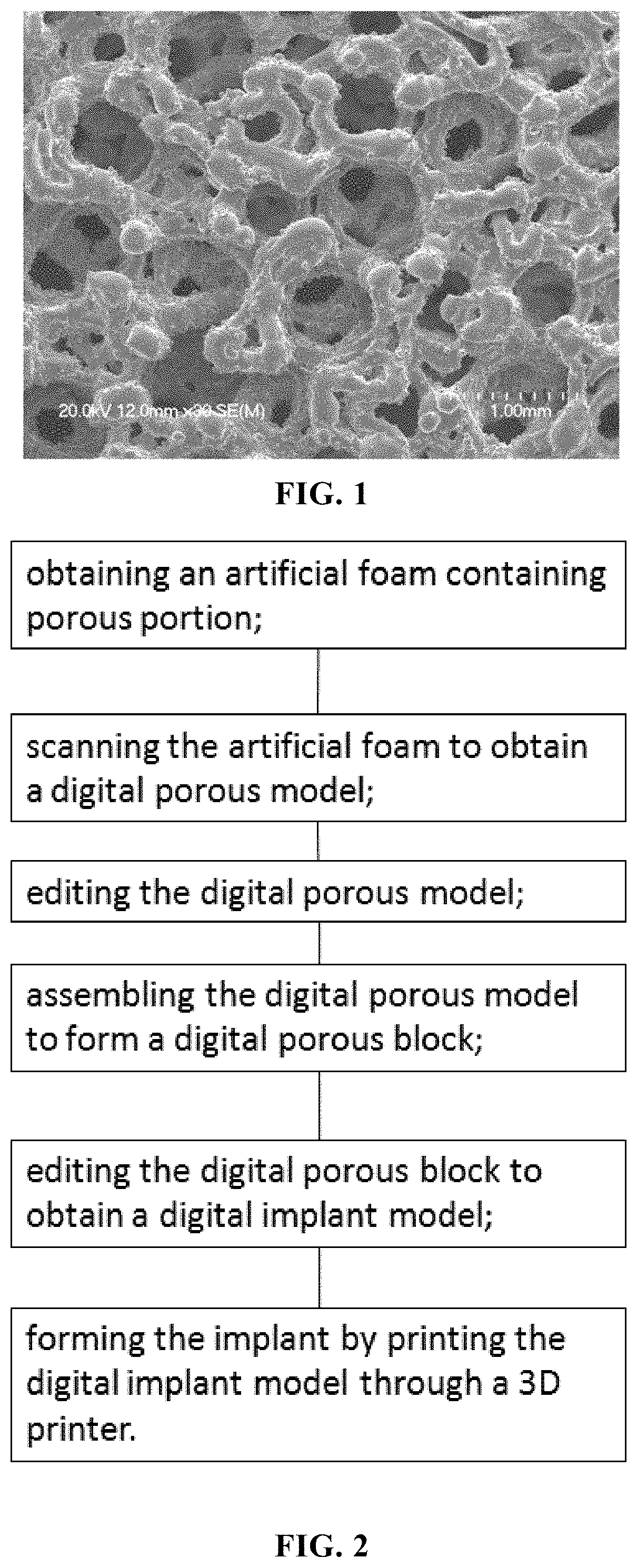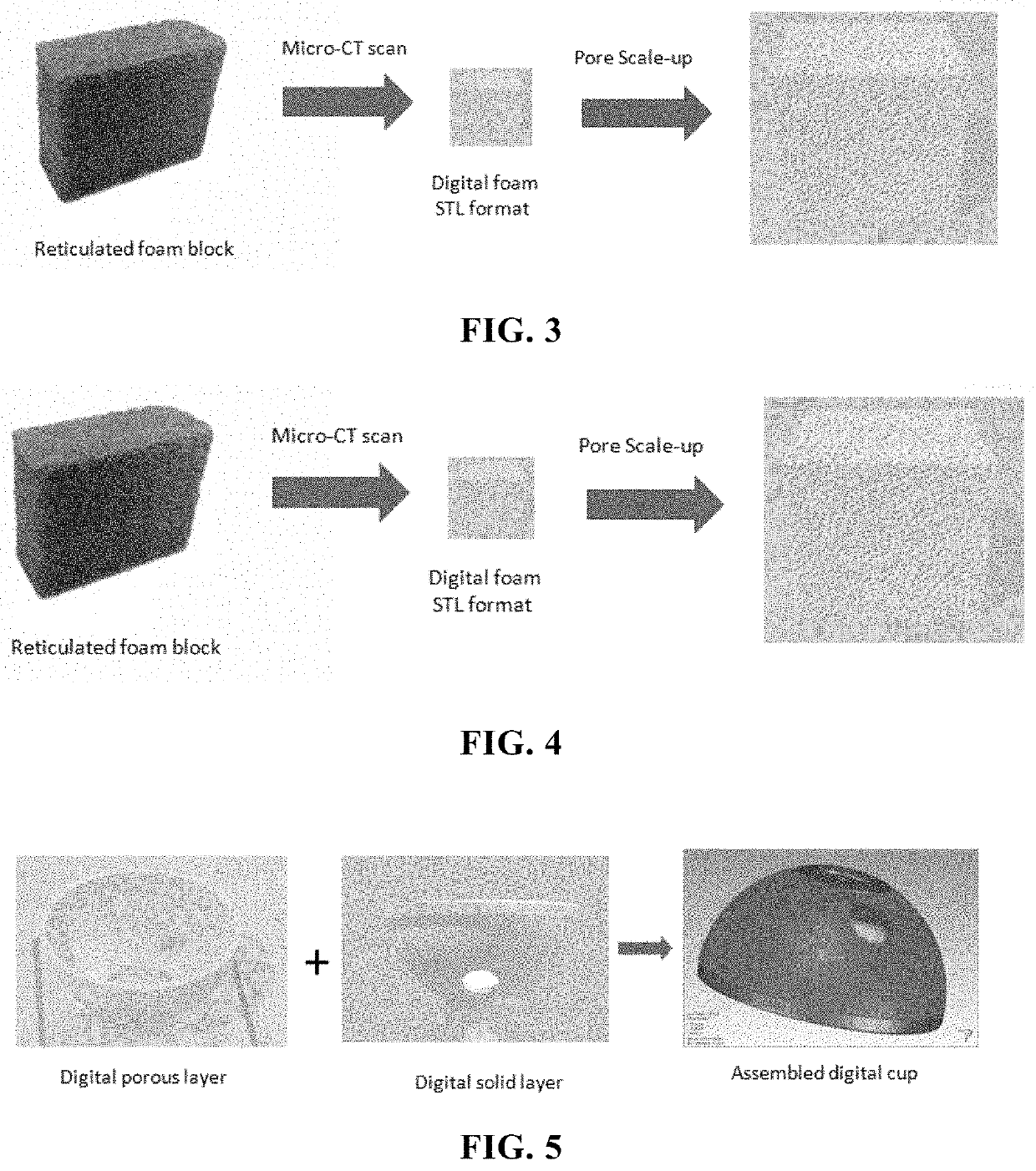Implant and a method of making the implant and a method of calculating porosity of a porous material
a technology of porous material and implant, which is applied in the field of implants and a method of making implants, can solve the problems of limited application, high biocompatibility of titanium, and direct reverse engineering methods, and achieve the effects of accurate measurement of porosity of porous materials, low cost, and relatively inexpensive implants
- Summary
- Abstract
- Description
- Claims
- Application Information
AI Technical Summary
Benefits of technology
Problems solved by technology
Method used
Image
Examples
example 1
ed Porous Titanium Sample with 1:1 Scale Ratio to SiC Foam
[0094]A reticulated titanium porous foam with 1:1 ratio to 80 PPI SiC foam was made according to process in FIG. 2. The 80 PPI SiC foam was made by Ultramet INC (1217 Montague Street, Pacolma, Calif. 91331, USA). The SiC foam has porosity 80 pores per inch (PPI). A foam block with dimension of 30 mm×20 mm×12.5 mm was scanned by micro-CT at a voxel of 20 microns at Microphonics INC (1550 Pond Road, Suite 110, Allentown, Pa. 18104, USA). The micro-CT scan parameters of SiC foam were Bruker SkyScan 1173 micro-CT, voxel 20 μm, source voltage 100 kV, source current 62 μA. Reconstructions were completed using Bruker NRecon software, porosity analysis was done using Bruker CTAn software and STL models were made using Synopsis Simpleware software. There was no ring artifect correction, smoothing. Beam hardening correction 40%.
[0095]A ½″ cube (12.5 mm×12.5 mm×12.5 mm) was digitally cut out from the original 30 mm×20 mm×12.5 mm block. ...
example 2
ed Porous Titanium Sample with 1.25:1 Scale Ratio to SiC Foam
[0099]All process parameters were the same as Example 1, except the digital STL file of 80 PPI SiC foam was magnified to 1.25 scale in three-dimensional geometry.
example 3
ed Porous Titanium Sample with 1.50:1 Scale Ratio to SiC Foam
[0100]All process parameters were the same as Example 1, except the digital STL file of 80 PPI SiC foam was magnified to 1.5 scale in three-dimensional geometry.
PUM
| Property | Measurement | Unit |
|---|---|---|
| volume | aaaaa | aaaaa |
| pore size | aaaaa | aaaaa |
| pore diameter | aaaaa | aaaaa |
Abstract
Description
Claims
Application Information
 Login to View More
Login to View More - R&D
- Intellectual Property
- Life Sciences
- Materials
- Tech Scout
- Unparalleled Data Quality
- Higher Quality Content
- 60% Fewer Hallucinations
Browse by: Latest US Patents, China's latest patents, Technical Efficacy Thesaurus, Application Domain, Technology Topic, Popular Technical Reports.
© 2025 PatSnap. All rights reserved.Legal|Privacy policy|Modern Slavery Act Transparency Statement|Sitemap|About US| Contact US: help@patsnap.com



